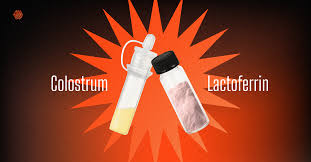The skin serves as a dynamic barrier against environmental insults, making wound healing vital for organismal survival. While minor injuries often heal seamlessly, larger wounds tend to scar due to elevated inflammation during tissue remodeling. This scarring compromises function and aesthetics, especially in adult mammals who lack the regenerative ability of lower vertebrates. Excess inflammation, driven by cytokines like PDGF, TGF-β, and IL-4/IL-13, leads to excessive ECM deposition and abnormal fibroblast activity. Regenerative strategies aim to balance healing speed with reduced scarring. Exosomes derived from bovine colostrum—especially those encapsulating lactoferrin (LF)—offer a natural, biocompatible solution with anti-inflammatory and regenerative potential.
Methods
Exosome-encapsulated lactoferrin (EV-exoLF) was isolated from bovine colostrum using modified ultracentrifugation. Mouse NIH/3T3 and human HS-68 fibroblast cells were used for wound healing and inflammation assays. Cell viability was measured with the CCK-8 assay, and wound healing potential was evaluated via scratch assay. To study anti-inflammatory effects, LPS-induced inflammation was simulated in HS-68 cells. IL-1 and IL-6 levels were measured using ELISA, while phosphorylated JNK (pJNK) expression was evaluated through Western blotting.
Key Findings
- Exosome Characterization: EV-exoLF had a size of ~90.3 nm and expressed exosomal markers CD9, CD63, and CD81.
- Cell Viability: At 10–100 µg/mL, EV-exoLF was non-toxic, but higher doses (200–300 µg/mL) reduced viability at 48–72 hours.
- Wound Healing: EV-exoLF significantly promoted fibroblast migration and scratch closure in both NIH/3T3 and HS-68 cells within 24–48 hours.
- Anti-Inflammatory Action: In LPS-treated HS-68 cells, EV-exoLF reduced IL-1 and IL-6 secretion and suppressed pJNK expression, indicating modulation of inflammatory pathways.
This study demonstrates that colostrum-derived EV-exoLF enhances wound closure and fibroblast mobility while dampening inflammatory responses. By encapsulating lactoferrin in exosomes, its stability and cellular uptake improve, boosting its regenerative and anti-inflammatory efficiency. Compared to MSC-derived exosomes, EV-exoLF is easier to source, ethically favorable, and scalable. Although in vitro results are promising, further in vivo studies are essential to explore angiogenesis, ECM remodeling, and bioavailability. Direct comparisons with free lactoferrin and other formulations will also help define its clinical potential in skin repair and topical therapeutics.
Link to the study: https://www.mdpi.com/1467-3045/47/7/549

